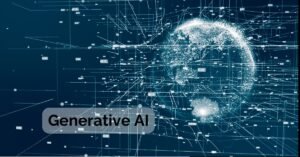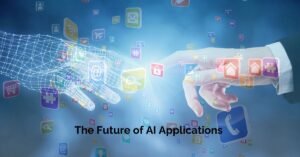
August 26, 2024

Natural Language Processing (NLP) is a field of artificial intelligence that deals with the interaction between computers and human (natural) languages. It’s the ability of a computer to understand, interpret, and generate human language in a way that is both meaningful and useful. NLP has become increasingly important in recent years, as it has applications in a wide range of fields, including customer service, machine translation, and information retrieval.
NLP is crucial in today’s world due to its wide-ranging applications and benefits. Here are some key reasons why NLP is important:
NLP offers numerous benefits across various industries and applications. Here are some of the key advantages:
Overall, NLP has the potential to revolutionize how we interact with technology and extract value from information. By understanding and leveraging the benefits of NLP, businesses and individuals can unlock new opportunities and improve their efficiency and effectiveness..
Despite its numerous benefits, NLP also faces several challenges and limitations:
Addressing these challenges requires ongoing research, development of new techniques, and ethical considerations to ensure that NLP systems are reliable, fair, and beneficial.
NLP leverages a variety of techniques to process and understand human language. Here are some of the most common ones:
These techniques are often used in combination to address different aspects of NLP, such as tokenization, part-of-speech tagging, named entity recognition, and machine translation. The choice of technique depends on the specific task and the available data.
Natural Language Processing (NLP) is a field of artificial intelligence that deals with the interaction between computers and human (natural) languages. It aims to enable computers to understand, interpret, and generate human language in a meaningful way.
Here are the core components of NLP:
Natural Language Processing (NLP) is a field of artificial intelligence that focuses on the interaction between computers and human language. It aims to enable computers to understand, interpret, and generate human language in a meaningful way.
Here’s a simplified overview of how NLP works:
Key Concepts:
In essence, NLP involves breaking down language into its components, representing it numerically, and applying machine learning techniques to extract meaning and perform various tasks.
Addressing these challenges requires ongoing research, development of new techniques, and ethical considerations to ensure that NLP systems are reliable, fair, and beneficial.
NLP has a wide range of applications across various industries and domains. Here are some of the most common ones:
These are just a few examples of the many applications of NLP. As technology continues to advance, we can expect to see even more innovative and impactful uses of NLP in the future
The evolution of NLP has been closely tied to advancements in computer hardware, algorithms, and data availability. Here’s a brief overview of its key milestones:
The evolution of NLP has been marked by a shift from rule-based to statistical and machine learning approaches, and more recently, the dominance of deep learning techniques. As technology continues to advance, we can expect further innovations in NLP, leading to even more sophisticated and powerful applications.
Natural Language Processing (NLP) is a fascinating field that enables computers to understand, interpret, and generate human language. If you’re interested in diving into this exciting area, here’s a guide to get you started:
Additional Tips:
Following these steps and continuously learning and experimenting, you can embark on a rewarding journey into the world of Natural Language Processing.
Natural Language Processing (NLP) has a wide range of applications across various industries and businesses. Here are some of the key use cases:
These are just a few examples of the many ways NLP can be used across businesses. As technology continues to advance, we can expect to see even more innovative and impactful applications of NLP in the future.
Several programming languages are well-suited for Natural Language Processing (NLP) tasks. Here are some of the most popular options:
Factors to Consider When Choosing a Language:
Ultimately, the best programming language for NLP will depend on your specific needs and preferences. Experiment with different languages to find the one that best suits your project and workflow.
While libraries are essential for NLP development, there are other valuable tools and platforms to consider:
By utilizing these tools and resources, you can effectively develop and deploy NLP applications, stay updated on the latest advancements, and connect with the NLP community.
Natural Language Processing (NLP) has seen significant advancements in recent years, with the development of powerful models capable of understanding and generating human language. Here are six influential NLP models:
These models have significantly advanced the capabilities of NLP and are widely used in various applications, from chatbots to medical diagnosis. As research continues, we can expect even more powerful and versatile NLP models to emerge in the future.
While NLP has made significant advancements, it’s not without its controversies. Here are some of the key issues:
Addressing these controversies requires careful consideration of ethical implications, responsible development and deployment of NLP technologies, and ongoing efforts to ensure fairness and transparency. It’s essential to approach NLP with a focus on human values and the potential benefits while mitigating risks and addressing concerns.
Amazon Web Services (AWS) offers a comprehensive suite of tools and services that can significantly accelerate your Natural Language Processing (NLP) projects. Here are some key ways AWS can assist:
Benefits of Using AWS for NLP:
With AWS services, you can accelerate your NLP projects, reduce development time, and focus on building innovative solutions
Python has become the de facto language for NLP due to its readability, ease of use, and extensive ecosystem of libraries. Here’s a brief overview of key Python libraries for NLP:
As NLP continues to evolve, several key areas are expected to see significant advancements:
These are just a few of the exciting areas where NLP is expected to make significant progress in the future. As technology continues to advance, we can anticipate even more innovative and impactful applications of NLP.
Natural Language Processing (NLP) has made remarkable strides in recent years, enabling computers to understand, interpret, and generate human language in increasingly sophisticated ways. From chatbots and virtual assistants to machine translation and sentiment analysis, NLP is transforming a wide range of industries.
As research continues to advance, we can expect NLP to play an even more significant role in our lives, enhancing communication, improving decision-making, and unlocking new possibilities for human-computer interaction.








@2023-2024-All Rights Reserved-JustAiTrends.com